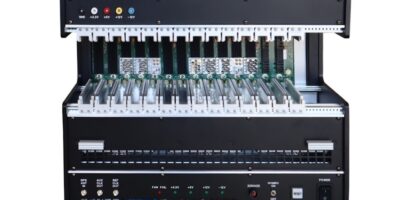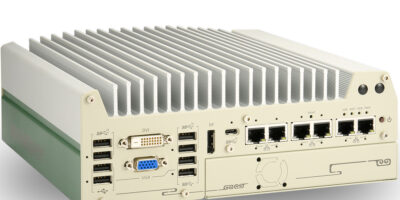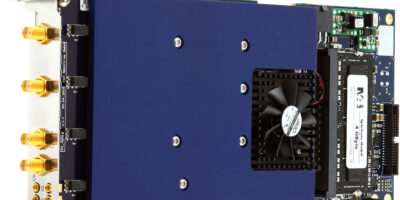A 12-slot, 3U development computer from Elma Electronic features high-speed RF and optical I/O connectivity on a number of key SOSA profiles. It supports both IO-intensive and compute-intensive processor slots, two switch slots and one PNT (position navigation and timing) slot.
“Now that SOSA 1.0 has been released, streamlining development time of SOSA aligned systems is critical, so that we can speed time to market and shorten deployment of these open standards-based systems,” said Ken Grob, director of embedded computing at Elma Electronic. “The 12-slot development platform provides a complete test environment to support application development for both SOSA and CMOSS initiatives,” he said.
An Elma Type 39 84HP-wide E-Frame chassis provides open access for testing and troubleshooting. The design also includes dual high wattage VITA 62 3U VPX pluggable power supply modules, a network timing card with radial support for IEEE 1588 precision timing and synchronisation and a 4590a 1/10/40GigE Ethernet switch with copper and fibre ports from Interface Concept.
There are also conduction-cooled slot inserts, front and rear fan trays with 12V DC fans and AC operation using a power cord. For control functions, the embedded computer includes a front panel on/off switch, reset switch, voltage LEDs and test points for easy operation and status acknowledgements via visual confirmations.
Elma Electronic manufactures commercial, industrial and rugged electronic products for embedded systems and application-ready platforms – from components, embedded boards, backplanes, chassis and enclosures, power supplies, to fully integrated subsystems.
It offers standard and custom cabinets and enclosures as well as precision components such as rotary switches/encoders, LEDs, front panels and small cases.
Elma leverages proven technology based on VITA, PICMG, and other standards-based architectures (i.e. OpenVPX, SOSA, VME, CompactPCI Serial, COM Express and PCIe/104) and is actively engaged in designing for applications requiring smaller footprints.
Elma Electronic manages entire projects from initial system architecture to specification, design, manufacturing and test through production facilities and sales offices around the world. The company serves the mil/aero, industrial, research, telecom, medical and commercial markets and is certified to ISO 9001 and AS 9100.







